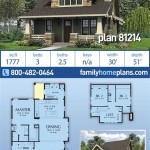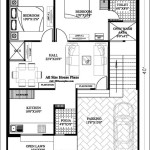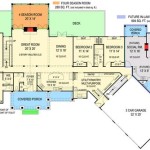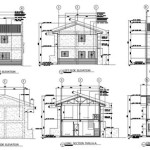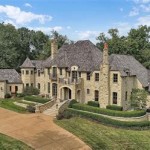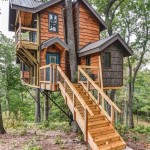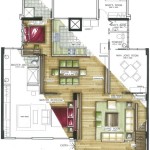Essential Aspects of Block House Plans
Block houses, with their distinctive square or rectangular shape, have gained immense popularity in modern architecture. These structures offer a unique blend of durability, functionality, and aesthetic appeal. When designing a block house, meticulous planning is essential to ensure the project's success. Here are some critical aspects to consider:
1. Site Selection and Orientation
The location and orientation of the block house play a vital role in its overall functionality and comfort. Choose a site that provides ample space for the building while considering factors like sunlight exposure, prevailing wind directions, and views. Orient the house to maximize passive solar gain in winter and minimize heat absorption in summer.
2. Floor Plan Layout
The floor plan is the blueprint of the house, determining the flow of space and the arrangement of rooms. Block houses often feature open and airy interiors, with large windows and high ceilings. Consider the number of bedrooms, bathrooms, and living spaces required, as well as their optimal placement for privacy and functionality.
3. Structural Design
The structural stability of the block house is paramount. Typically, these houses are constructed using concrete blocks or cinder blocks, providing exceptional strength and durability. The structural design should account for the building's size, shape, and any load-bearing requirements. Proper reinforcement and seismic considerations are crucial.
4. Roofing Options
The roofing system contributes to the block house's aesthetic appeal and functionality. Traditional pitched roofs offer classic lines and good drainage, while flat roofs provide a modern and sleek look. Consider materials such as tiles, shingles, or metal sheeting, taking into account factors like climate, durability, and energy efficiency.
5. Facade Design
The facade of the block house is its exterior expression. It can be adorned with various finishes, including paint, stucco, or stone cladding. Consider the overall architectural style and the desired visual impact. Decorative elements such as moldings, columns, and window trim can enhance the facade's aesthetics.
6. Energy Efficiency
In today's environmentally conscious climate, energy efficiency is of utmost importance. Incorporate insulation into the walls, roof, and windows to minimize heat loss. Utilize energy-efficient appliances and lighting systems. Passive solar design principles can also reduce energy consumption.
7. Landscaping
The landscaping surrounding the block house complements its architectural features and creates a cohesive outdoor space. Plan for a well-maintained lawn, flower beds, and trees that frame the house and enhance its visual appeal. Consider adding outdoor living spaces such as patios or decks for relaxation and entertainment.
By meticulously considering these essential aspects, you can develop comprehensive block house plans that meet your specific needs and aspirations. These robust and visually striking structures will provide a comfortable and stylish living space for years to come.

Cool Energy Efficient Concrete House Plans Houseplans Blog Com

Cool Energy Efficient Concrete House Plans Houseplans Blog Com

Cool Energy Efficient Concrete House Plans Houseplans Blog Com

Concrete House Plans Icf And Block Modern Home

Cool Energy Efficient Concrete House Plans Houseplans Blog Com

Concrete Block House Plans Smalltowndjs Com Floor Tiny

Cool Energy Efficient Concrete House Plans Houseplans Blog Com

Concrete Block Icf Design Home 4 Bdrm 3 Bath 2592 Sq Ft Plan 132 1256 Bedroom House Plans Tuscan

The Eaton Corner Block House Design Mcdonald Jones Homes

Cool Energy Efficient Concrete House Plans Houseplans Blog Com

